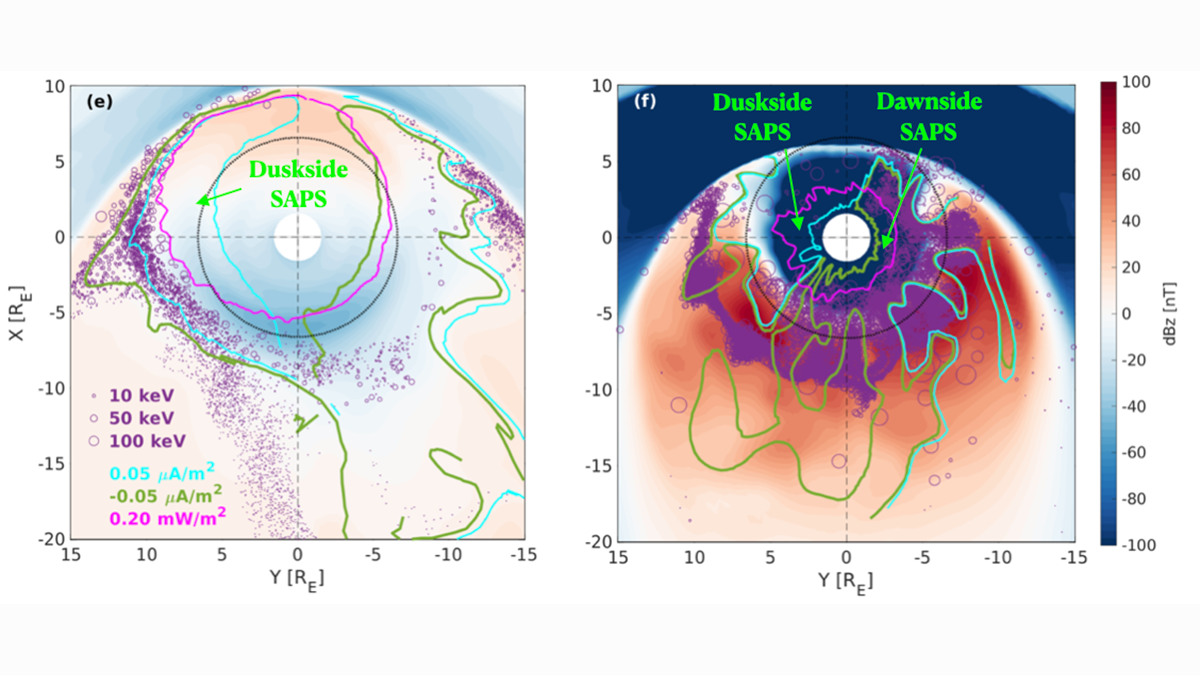Source: AGU Advances
Editors’ Highlights are summaries of recent papers by AGU’s journal editors.
Spectacular aurorae are the most well-known geomagnetic storm phenomenon. In the subauroral region (a narrow latitude band closer to the equator from the auroral boundary), fast-moving, westward plasma flows in the ionosphere are often observed from afternoon to midnight (or “duskside” sector) during geomagnetically active periods. However, during the main and recovery phase of an extreme geomagnetic storm in 2003, similar fast eastward plasma flows were discovered on the “dawnside” (morning sector) subauroral region. Lin et al. [2022] explain the origin of these dawnside subauroral fast flows: strong magnetospheric convection transports energetic ions to the dawnside where they accumulate and build up plasma pressure and currents that can generate the eastward subauroral plasma flow in the ionosphere. Elucidating this mechanism can help us understand how geospace responds to extremely strong geomagnetic storms that can result in severe adverse effects on human society and infrastructure.
Citation: Lin, D., Wang, W., Merkin, V. G., Huang, C., Oppenheim, M., Sorathia, K., et al. [2022]. Origin of dawnside subauroral polarization streams during major geomagnetic storms. AGU Advances, 3, e2022AV000708. https://doi.org/10.1029/2022AV000708
—Susan Trumbore, Editor in Chief, AGU Advances

